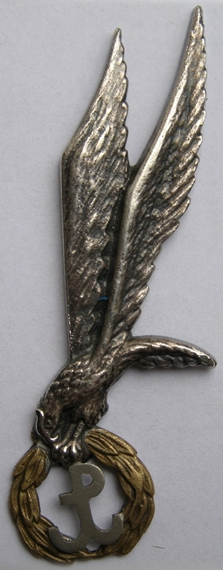|
Kedyw
''Kedyw'' (, partial acronym of ''Kierownictwo Dywersji'' ("Directorate of Sabotage") was a Polish resistance movement in World War II, Polish World War II Home Army unit that conducted active and passive sabotage, propaganda and armed operations against Nazi German forces and Collaborationism, collaborators. Operations Kedyw was created on January 22, 1943, from two pre-existing Armia Krajowa organisations: Zwiazek Odwetu, Związek Odwetu (''Association of Retaliation''), and Wachlarz. Initially, the units were small and town-based. Eventually, as more were formed, some moved into forested areas to begin partisan (military), partisan warfare. Kedyw organized weapon and munition factories, military schools, intelligence (information gathering), intelligence, counter-intelligence, field hospitals and a communication network. Most members of Kedyw were Scouting in Poland, Boy Scouts from Zwiazek Harcerstwa Polskiego, Związek Harcerstwa Polskiego and its wartime organisation, ... [...More Info...] [...Related Items...] OR: [Wikipedia] [Google] [Baidu] |
Franz Kutschera
Franz Kutschera (22 February 1904 – 1 February 1944) was an Austrian Nazi politician and government official. He held numerous political and administrative offices with the Nazi Party and the ''Schutzstaffel'' (SS) both before and after the ''Anschluss'' of Austria in 1938. During World War II, he served with the SS in France, Yugoslavia, the Soviet Union, and finally Poland. In 1943, Kutschera was appointed the SS and Police Leader in German-occupied Warsaw. Due to his crimes against Poles, including Polish Jews, the Polish Home Army, in agreement with the Polish government in exile, targeted him for assassination. On 1 February 1944, he was gunned down in front of the SS headquarters in Warsaw in a special operation by Kedyw, a dedicated resistance special operations unit. In reprisal, the Germans executed 300 Polish civilians. Life Kutschera was born in Oberwaltersdorf, Lower Austria (then part of the Austro-Hungarian Empire) on 22 February 1904 and was the son ... [...More Info...] [...Related Items...] OR: [Wikipedia] [Google] [Baidu] |
Polish Resistance Movement In World War II
In Poland, the Resistance during World War II, resistance movement during World War II was led by the Home Army. The Polish resistance is notable among others for disrupting German supply lines to the Eastern Front (World War II), Eastern Front (damaging or destroying 1/8 of all rail transports), and providing military intelligence, intelligence reports to the United Kingdom, British British intelligence agencies, intelligence agencies (providing 43% of all reports from German-occupied Europe, occupied Europe). It was a part of the Polish Underground State. Organizations The largest of all Polish resistance organizations was the Armia Krajowa (Home Army, AK), loyal to the Polish government in exile in London. The AK was formed in 1942 from the Union of Armed Struggle (''Związek Walki Zbrojnej'' or ZWZ, itself created in 1939) and would eventually incorporate most other Polish armed resistance groups (except for the communists and some far-right groups). [...More Info...] [...Related Items...] OR: [Wikipedia] [Google] [Baidu] |
Operacja Główki
Operation Heads () was the code name for a series of assassinations of Nazi officials by the World War II Polish Resistance. Those targeted for assassination had been sentenced to death by Polish Underground Special Courts for crimes against Polish citizens during the World War II German occupation of Poland. The operation's code name, literally "Operation Little Heads", was a sardonic reference to the ''Totenkopf'' ("Death's Head") insignia on Nazi German SS uniforms and headgear. Background Operation Heads was the response of Polish Resistance fighters of the Home Army to Nazi terror in Poland. On the streets of Polish cities, the non-Jewish population was targeted by the ''łapanka'' policy, in which Nazi forces indiscriminately rounded up, kidnapped and murdered civilians. In Warsaw, between 1942 and 1944, there were approximately 400 daily victims of ''łapanka''. Tens of thousands of these victims were killed in mass executions, including an estimated 37,000 people at t ... [...More Info...] [...Related Items...] OR: [Wikipedia] [Google] [Baidu] |
Armia Krajowa
The Home Army (, ; abbreviated AK) was the dominant resistance movement in German-occupied Poland during World War II. The Home Army was formed in February 1942 from the earlier Związek Walki Zbrojnej (Armed Resistance) established in the aftermath of the German and Soviet invasions in September 1939. Over the next two years, the Home Army absorbed most of the other Polish partisans and underground forces. Its allegiance was to the Polish government-in-exile in London, and it constituted the armed wing of what came to be known as the Polish Underground State. Estimates of the Home Army's 1944 strength range between 200,000 and 600,000. The latter number made the Home Army not only Poland's largest underground resistance movement but, along with Soviet and Yugoslav partisans, one of Europe's largest World War II underground movements. The Home Army sabotaged German transports bound for the Eastern Front in the Soviet Union, destroying German supplies and tying down subs ... [...More Info...] [...Related Items...] OR: [Wikipedia] [Google] [Baidu] |
Cichociemni
The Silent Unseen ( Polish: ''Cichociemni'', ) were elite special-operations paratroopers of the Polish Army in exile, created in Great Britain during World War II to operate in occupied Poland (''Cichociemni Spadochroniarze Armii Krajowej''). Kazimierz Iranek-Osmecki, ''The Unseen and Silent: Adventures from the Underground Movement, Narrated by Paratroops of the Polish Home Army'', Sheed and Ward, 1954, p. 350. A total of 2,613 Polish Army soldiers volunteered for training by Polish and British SOE operatives. Only 606 people completed the training, and eventually 316 of them were secretly parachuted into occupied Poland. The first operation ("air bridge", as it was called) took place on 15 February 1941. This operation was conducted by Captain Józef Zabielski, Major Stanisław Krzymowski and political courier Czesław Raczkowski. After 27 December 1944 further operations were discontinued, as by then most of Poland had been occupied by the Red Army. Of 316 Cichociemni, 10 ... [...More Info...] [...Related Items...] OR: [Wikipedia] [Google] [Baidu] |
Home Army
The Home Army (, ; abbreviated AK) was the dominant resistance movement in German-occupied Poland during World War II. The Home Army was formed in February 1942 from the earlier Związek Walki Zbrojnej (Armed Resistance) established in the aftermath of the German and Soviet invasions in September 1939. Over the next two years, the Home Army absorbed most of the other Polish partisans and underground forces. Its allegiance was to the Polish government-in-exile in London, and it constituted the armed wing of what came to be known as the Polish Underground State. Estimates of the Home Army's 1944 strength range between 200,000 and 600,000. The latter number made the Home Army not only Poland's largest underground resistance movement but, along with Soviet and Yugoslav partisans, one of Europe's largest World War II underground movements. The Home Army sabotaged German transports bound for the Eastern Front in the Soviet Union, destroying German supplies and tying down subs ... [...More Info...] [...Related Items...] OR: [Wikipedia] [Google] [Baidu] |
Sabotage
Sabotage is a deliberate action aimed at weakening a polity, government, effort, or organization through subversion, obstruction, demoralization (warfare), demoralization, destabilization, divide and rule, division, social disruption, disruption, or destruction. One who engages in sabotage is a ''saboteur''. Saboteurs typically try to conceal their identities because of the consequences of their actions and to avoid invoking legal and organizational requirements for addressing sabotage. Etymology The English word derives from the French word , meaning to "bungle, botch, wreck or sabotage"; it was originally used to refer to labour disputes, in which workers wearing wooden shoes called interrupted production through different means. A false etymology, popular but incorrect account of the origin of the term's present meaning is the story that poor workers in the Belgian city of Liège would throw a wooden into the machines to disrupt production. One of the first appearance ... [...More Info...] [...Related Items...] OR: [Wikipedia] [Google] [Baidu] |
Ponury Group Wykus
Jan Piwnik (31 August 1912 – 16 June 1944) was a Polish World War II soldier, a ''cichociemny'' and a notable leader of the Home Army in the Świętokrzyskie Mountains. He used the nickname ''Ponury'' ("Gloomy" or "Grim") and ''Donat''. Biography Jan Piwnik was born on 31 August 1912 in the village of Janowice, Kielce Voivodeship (1919–39), Second Polish Republic, to Jan, a farmer, and Zofia (Kłonica) Piwnik. In 1933, he graduated from a reserve NCO artillery school in Włodzimierz Wołyński. In 1935, he joined the Polish police, where he served as an officer. Mobilized in 1939, during the invasion of Poland by Germany, he commanded a motorized unit of the police. When the Soviets also attacked, on 23 September he and his unit crossed the Hungarian border and were interned. Piwnik managed to escape from the internment camp. In November 1939, he reported to the Polish Government in Exile in Paris. He joined the Polish Army, reconstituted in France at that time and was ... [...More Info...] [...Related Items...] OR: [Wikipedia] [Google] [Baidu] |
Zwiazek Odwetu
Union of Retaliation (Polish: ''Związek Odwetu'' or ''Z.O.'') was a Polish World War II resistance organisation established on 20 April 1940. It was created by General Stefan Rowecki, head of the Armed Resistance, as that organization's branch dedicated to sabotage and covert operations. Early history The ZO was formed out of a variety of previously existent sabotage groups which were then merged into the ZWZ. Initially a part of the ZWZ, all of them were then separated. Thus the risk of eliminating the whole ZWZ by destruction of one of its sabotage cells was eliminated. Initially headed by Maj. Franciszek Niepokólczycki ''Teodor'', the organization was aimed at diminishing the German military and industrial potential by means of active and passive sabotage. It also carried out a number of revenge actions as a reprisal for particularly brutal German mass shootings, łapankas or other actions aimed at Polish civilians. The net of sabotage and intelligence cells organized by t ... [...More Info...] [...Related Items...] OR: [Wikipedia] [Google] [Baidu] |
Concentration Camp
A concentration camp is a prison or other facility used for the internment of political prisoners or politically targeted demographics, such as members of national or ethnic minority groups, on the grounds of national security, or for exploitation or punishment. Prominent examples of historic concentration camps include the British confinement of non-combatants during the Second Boer War, the Internment of Japanese Americans, mass internment of Japanese-Americans by the US during the Second World War, the Nazi concentration camps (which later morphed into extermination camps), and the Soviet labour camps or gulag. History Definition The term ''concentration camp'' originates from the Spanish–Cuban Ten Years' War when Spanish forces detained Cuban civilians in camps in order to more easily combat guerrilla forces. Over the following decades the British during the Second Boer War and the Americans during the Philippine–American War also used concentration camps. The term "c ... [...More Info...] [...Related Items...] OR: [Wikipedia] [Google] [Baidu] |
Franz Bürkl
Franz may refer to: People * Franz (given name) * Franz (surname) Places * Franz (crater), a lunar crater * Franz, Ontario, a railway junction and unorganized town in Canada * Franz Lake, in the state of Washington, United States – see Franz Lake National Wildlife Refuge Businesses * Franz Deuticke, a scientific publishing company based in Vienna, Austria * Franz Family Bakeries, a food processing company in Portland, Oregon * Franz-porcelains, a Taiwanese brand of pottery based in San Francisco Other uses * ''Franz'' (1971 film), a Belgian film * Franz (2025 film), an upcoming biographical film of Franz Kafka * Franz Lisp, a dialect of the Lisp programming language See also * Frantz (other) Frantz may refer to: * Frantz (given name), a masculine given name (and list of people with the given name) * Frantz (surname), a surname (and list of people with the surname) * Frantz (''Coppélia''), a character in ''Coppélia'' * ''Frantz'' ( ... * Franzen (disamb ... [...More Info...] [...Related Items...] OR: [Wikipedia] [Google] [Baidu] |







